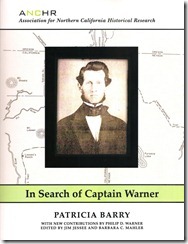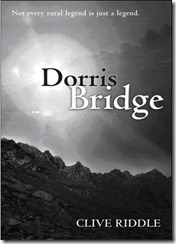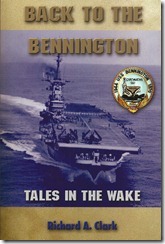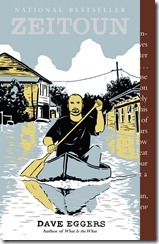Some things are known about William H. Warner (though not whether the "H" stands for "Henry" or "Horace"). Born in New York on May 8, 1812, he graduated from West Point; became a Army topographical engineer; helped lay out the city of Sacramento in 1847; and, on September 26, 1849, was "killed at age 37 by nine arrows fired by California Indians while exploring Northeastern California mountain passes." He was looking "for a railroad route from the Mississippi River to the Pacific Coast."
In 1987 the Association for Northern California Records and Research (ANCRR), in supporting the Special Collections department at Chico State University's Meriam Library, published "In Search of Captain Warner." Authored by Alturas-area resident Patricia Barry, the slim paperback presented what was then known about Warner. Now, a quarter century later, the renamed Association for Northern California Historical Research (ANCHR) has reissued the book "with new contributions by Philip D. Warner," William's cousin.
The book, edited by Jim Jessee and Barbara C. Mahler, is available in paperback for $20 from www.csuchico.edu/anchr. Philip Warner's additions make for lively reading. He and his wife, Liv, have crossed the country in search of Captain Warner's story. In 2006, one of the libraries connected with the University of Rochester put sections of Warner's diary on the Internet. Philip and Liv visited there. "What a surprise!" he writes. "As a rather unemotional, nerdy engineer, I was not ready for what happened when I picked up William's leather-bound diary. Holding the book in my hand (where his hand must have been many times) was like a handshake. I was overcome by emotion."
Philip's research is presented in a series of letters to his cousin. Among the observations: "I live in retirement in Polk County, Florida, near where you were stationed during the Florida Indian Wars, 1836 to 1838." Captain Warner's diary is laconic; the new book contains excerpts from the "long-lost journal" (along with helpful commentary) but questions abound. What was his relationship to younger Susan Moggoffin, who mentions him eleven times in her own diary? Perhaps his uniform impressed her.
Barry had called Warner "the formless, faceless man" (the only known photograph of him graces the book's cover). Now, with Philip Warner's help, some of the shadows have been dispersed.




